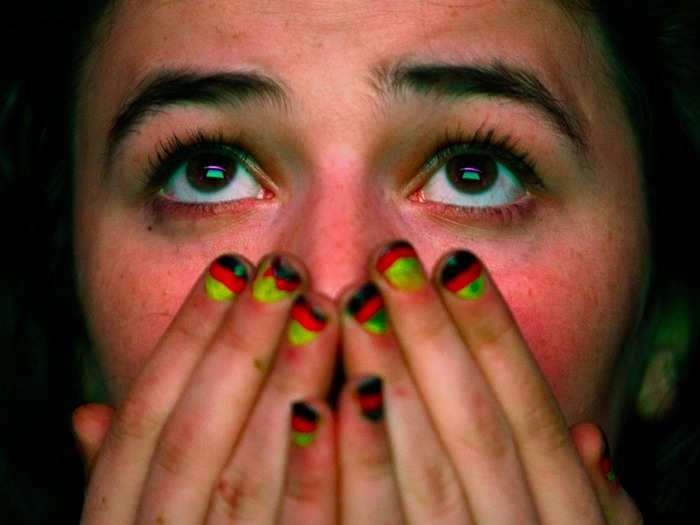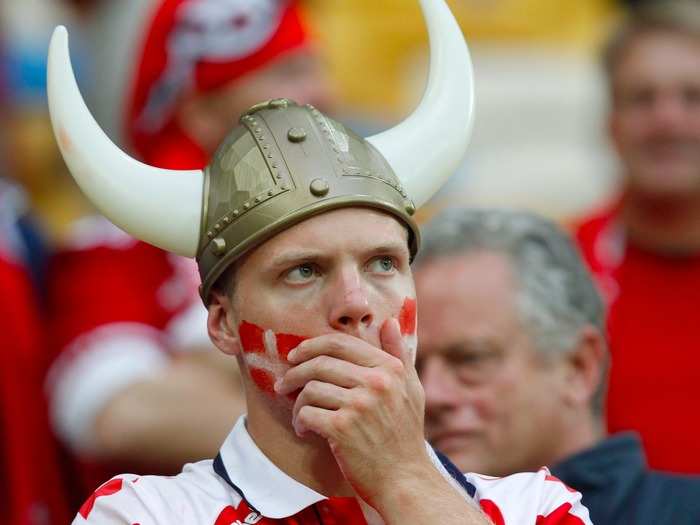These are the 23 European countries where people have the most debt
23. Lithuania — 34.25%. The small Baltic nation does pretty well when it comes to household debt, with the average household holding just over a third of the European average.

22. Latvia — 43.8%. Lithuania's next door neighbour also scores pretty well when it comes to household debt. Latvia recently elected a new government which, according to ratings agency Fitch, is pursuing "deficit and debt reduction and economic reform," so things might get even better.

21. Slovenia — 45.92%. Eurostat's data shows debt levels in Slovenian households are close to half of household incomes, a relatively low level for Europe. According to recent data, Slovenia is "currently experiencing macroeconomic imbalances."

20. Hungary — 46.15%. While household debt is relatively low in Hungary compared to bigger European nations, the country is not without debt issues. Hungarian sovereign debt is firmly in "junk" territory, thanks in part to the unpredictable policies of president Viktor Orban.

19. Slovakia — 50.69%. Household debt held in Slovakia has jumped 2% in comparison to incomes since 2012, when it was just 45%. The country held a general election in February.

18. Czech Republic — 57.38%. Household debt to incomes is fairly stable in the Czech Republic, although it has grown around 2% in the past couple of years.

17. Poland — 58.13%. The amount of debt held by households in Poland has surged since the country joined the EU in 2004, something which sent the number of people looking to buy homes soaring.

16. Italy — 62.63%. As well as high levels of household debt, Italy's proportion of debt to GDP is the second highest in the eurozone. That figure spiked in 2015 because the Treasury increased its available liquidity.

15. Estonia — 70.18%. As with most other nations on this list, the vast majority of Estonia's household debt is held in mortgages and household loans, something which is being driven by a booming housing market and by low interest rates. Estonians hold far more debt than their Baltic neighbours Lithuania and Latvia.

14. Austria — 82.69%. Austria may have a pretty substantial level of household debt when compared to income, but government debt in the country compared to income is even worse. Government debt has spiked from 72.5% of GDP in 2010 to nearly 86% now.

13. Germany — 82.78%. Households in Europe's largest economy hold less debt than the euro area average of 96.57%, but on a global scale Germans still have a huge amount of debt. Angela Merkel recently used the country's experiences of Europe's "household debt crisis" as a reason why Britain should integrate more with the EU.

12. France — 86.14%. The level of debt held by French households has been steadily increasing in the past decade. In 2006, the figure stood at 68.66%.

11. Belgium — 98.87%. The amount of household debt compared to incomes in Belgium has increased from 94.31% at the last reading taken by Eurostat.

10. Finland — 109.97%. Mortgages make up a particularly large proportion of the household debts held by Finns. According to the country's statistical agency, the average housing loan in Finland is 181% of annual household income.

9. Spain — 112.3%. Earlier in March, the European Commission warned that Spain's economy is being weakened by "large stock imbalances in the form of external and internal debt, both public and private." Household debt plays a huge role in that weakness.

8. Portugal — 116.39%. Towards the end of 2015, total combined debt in Portugal reached 360% of the country's GDP.

7. United Kingdom — 125.87%. According to data from the Money Charity, households in the UK hold an average of £54,080 of debt right now.

6. Sweden — 148.68%. Household debt in Sweden is on the rise which, according to the IMF, is helping fuel a growing housing bubble in the Nordic state. Sweden's economy is currently being defined by persistently low inflation, something the country's central bank is trying to combat with negative interest rates

5. Ireland — 179.55%. Ireland's household debt burden is actually falling at the minute, dropping to €33,530 per capita at last estimate, however, that's nearly twice the average disposable income in the country.

4. Norway — 187.47%. Norway may often by cited as the most prosperous nation on earth, but that doesn't stop its average citizens from being heavily indebted.

3. Cyprus — 202.45%. Cyprus is one of just three countries in Europe to have a debt-to-income ratio for households of more than 200%.

2. Netherlands — 214.45%. Estimates from the Netherlands' national statistical agency put the total debt held by Dutch households at more than €740 billion last year, around €100 billion less than the country's total GDP.

1. Denmark — 265.11%. Standing head and shoulders above the rest of Europe, Danes have by far the most debt of anyone on the continent, and in fact, the world. However, the governor of the Danish central bank, Lars Rohde isn't worried. In a 2014 interview he said that the threat to financial stability posed by high household debt is "not serious."

Popular Right Now
Advertisement